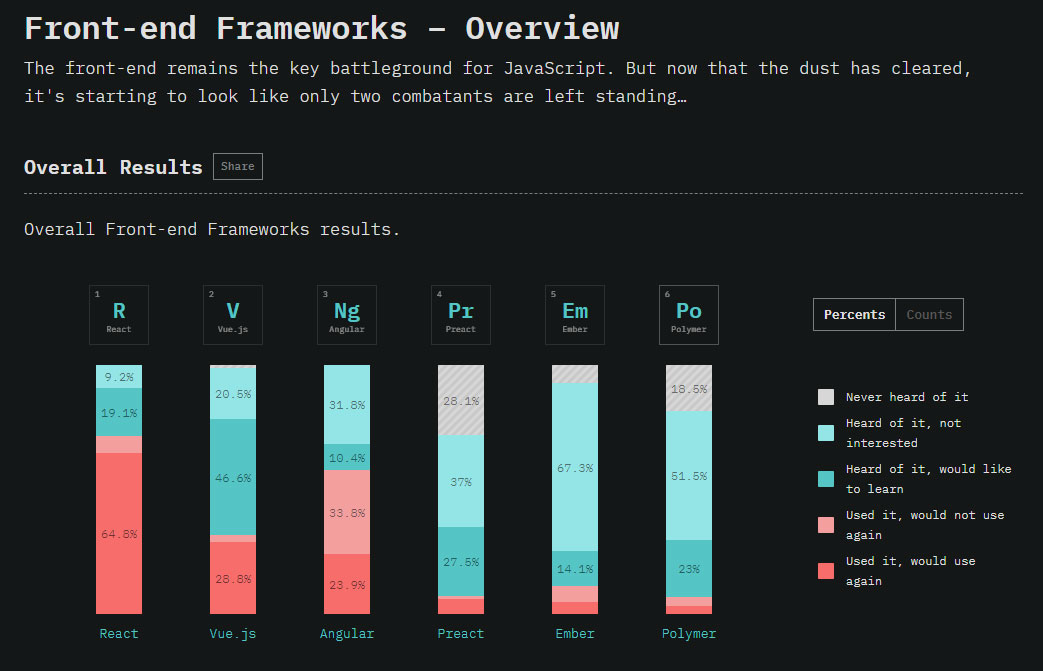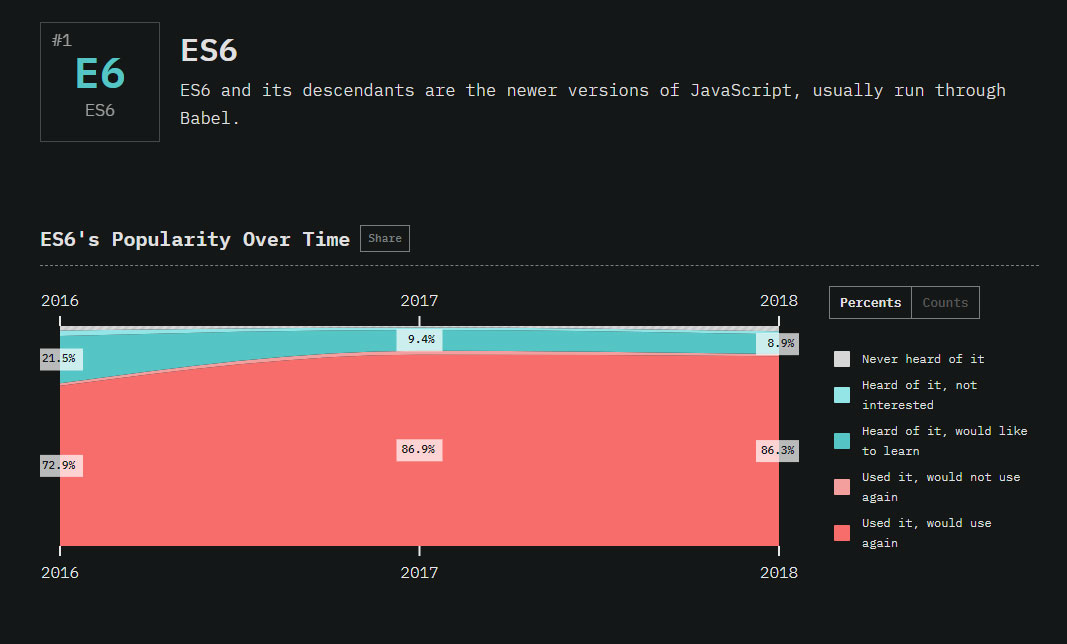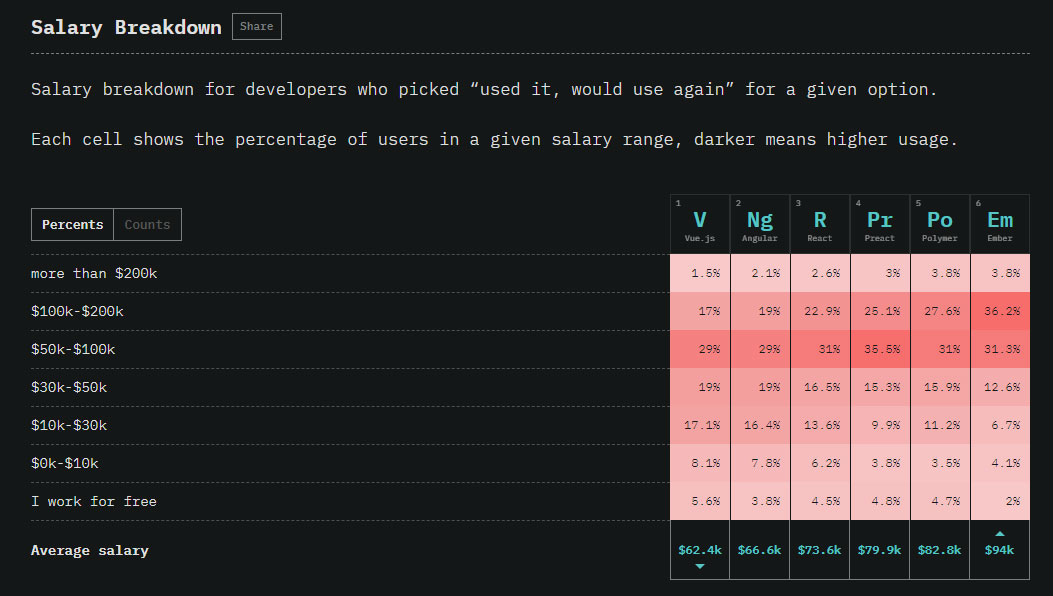Revealed: The latest JavaScript trends
Need JavaScript guidance? This survey unveils the hottest trends right now.

JavaScript is an essential component in any web developer's toolkit. It's top of our list of web skills that pay, but it's a discipline that requires you to keep on learning.
You might be au fait with basic JavaScript, but to really boost your career you need to be up to date with the popular JavaScript frameworks. For example, do you know what the best jQuery plugins are?
No one wants to be saddled with a bunch of outdated JavaScript skills, but how do you keep tabs on what's hot in the JavaScript world right now? Luckily, someone's done the legwork for you in the form of the State of JavaScript 2018. It's a massive survey of over 20,000 JavaScript developers undertaken by Sacha Greif, Raphael Benitte and Michael Rambeau, and every year since 2016 they've been using it to uncover exactly what libraries, frameworks and languages the JavaScript pros are using right now, so you can make an informed choice about which areas of the massive JS ecosystem you should be targeting (also see our CSS and JavaScript tutorials).
The good news is that if you were on the case with the hottest frameworks this time last year then you're almost certainly still good to go; React is still far and away the most popular frontend framework around, with both a high satisfaction ration and large user base, and Vue isn't far behind. And while Angular has almost as many users as React, they're nowhere near as happy with it; if you're concentrating on Angular then you might well want to explore other options.
If you're a backend developer then there shouldn't be any big surprises lined up for you: Express is still the framework to rule them all, used and loved by 64.7 per cent of developers, with Next.js trailing far behind with just 8.6 per cent of users.
When it comes to what the survey calls 'flavours' – that is, the various syntaxes and languages that can compile to JavaScript – the leader is still ES6, the default JS language. However TypeScript continues to rise in popularity; when the survey started in 2016, 20.8 per cent of users said that they had used it and would use again, while in 2018 this number has risen to 46.7 per cent.
There's an awful lot to explore in the State of JavaScript 2018 results, and some really helpful information. If you drill down into the results you can find useful recommendations for what tools to use alongside your preferred technologies, and you'll also find salary breakdowns for each framework, flavour and tool covered in the survey. Perfect for your next pay negotiation.
Daily design news, reviews, how-tos and more, as picked by the editors.
Basically if you're working in JavaScript then you need to read this; head straight to the State of JavaScript 2018 site to arm yourself for the future.
Related articles:

Jim McCauley is a writer, performer and cat-wrangler who started writing professionally way back in 1995 on PC Format magazine, and has been covering technology-related subjects ever since, whether it's hardware, software or videogames. A chance call in 2005 led to Jim taking charge of Computer Arts' website and developing an interest in the world of graphic design, and eventually led to a move over to the freshly-launched Creative Bloq in 2012. Jim now works as a freelance writer for sites including Creative Bloq, T3 and PetsRadar, specialising in design, technology, wellness and cats, while doing the occasional pantomime and street performance in Bath and designing posters for a local drama group on the side.




